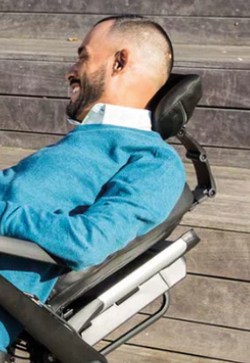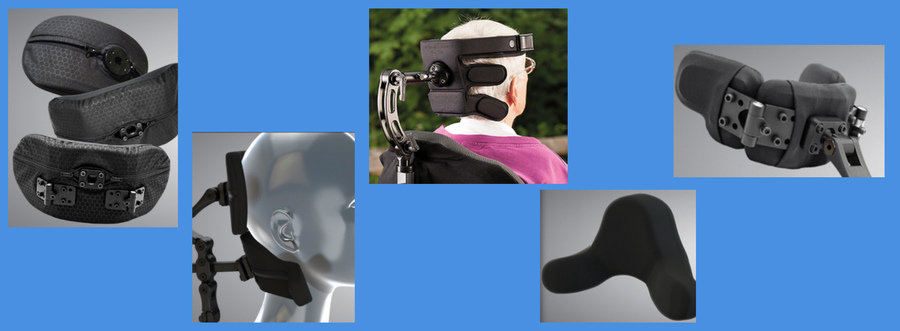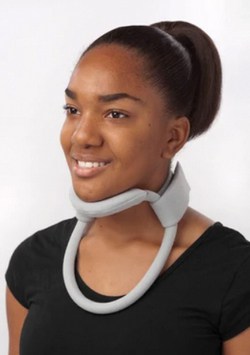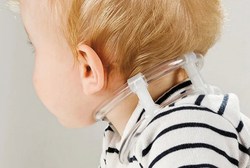Let’s Get It Clear: What makes a good head support? Or is that neck support?
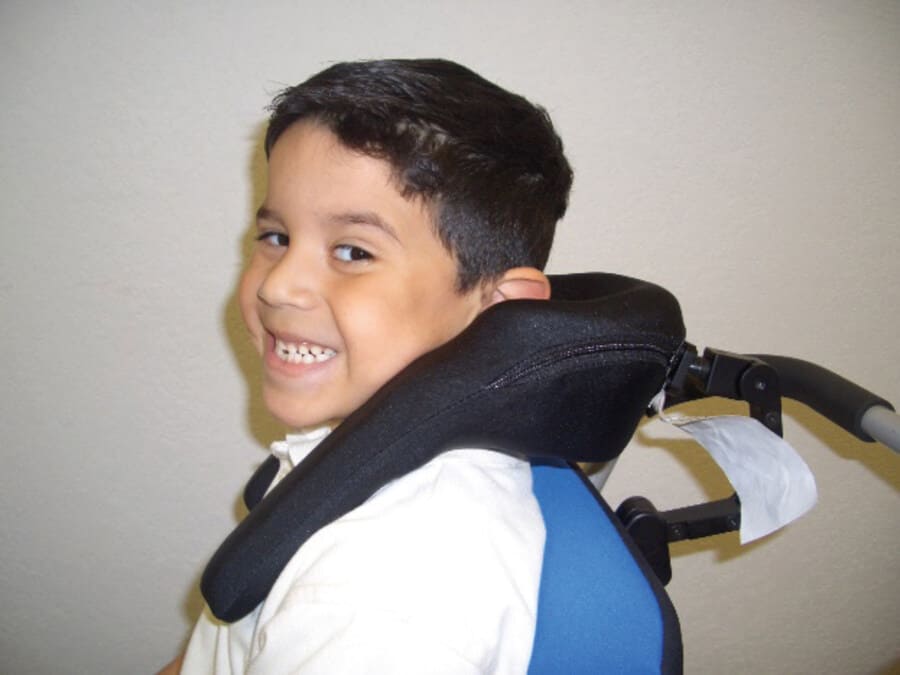
The position of our head is critical for many of our day-to-day functions. For a number of people, external assistance is needed to help to move or hold the head into an appropriate position. There’s a choice of items which can be added to a wheelchair which can simply be head rests, or can be more active in a positioning role. In this article we consider the attributes that should be considered in making the device selection.
Our heads are multisensory and multifunctional, so whatever we can do to make full use of these attributes the better the quality of our lives. An appropriate head position is important for hearing, balance, breathing, and eating and swallowing.
Probably most important, alongside these, is vision – not only for practical reasons such as seeing what our hands are doing, where we are going, what’s going on around us, etc., but also for social interactions. For children in school, visual interaction with teachers and classmates leads to better learning outcomes.
We have what is known as our ‘cone of vision’, and this relates to how close to our head’s centreline (both vertically and horizontally) that an object needs to placed for us to be able to see it properly: for full colour perception it should be within 15 to 20 degrees of this centre line (green is the most angle sensitive colour, whereas blue can be seen somewhat more easily in our peripheral vision).
It is therefore important that we can move our head into a position that aligns our cone of vision with the object(s) that we wish to focus on, or that the objects can be moved into this zone.
Controlling the head
Our head weighs around six kilograms, and is perched on top of a couple of relatively small vertebrae, the Atlas (C1) and Axis (C2), that are responsible for our being able to nod and rotate our heads.
To maintain control of these movements and return to the midline is dependent on the muscular control offered by the muscles in our necks. A further influence is the degree of kyphotic curvature of the spine leading to the need for cervical extension to get the head into an upright position, so let’s bear in mind what we can do with pelvic and thoracic positioning to offset the kyphotic effects.
On a wheelchair there is often a pad placed behind the head, but what is it for? If it is there to protect the head from snapping back under fast acceleration, then its function is comparable with the item we will find in our car seat i.e. as a ‘restraint’.
More frequently, it will be positioned so that as a seat is reclined and/or tilted, then the pad acts as a head rest to support the weight of the head as the head is moved backwards. In these cases, the assumption is that the wheelchair occupant has reasonable head control, and therefore has no problems in keeping their head in the midline position, and aligned with a simple pad (Figure 1). But what if there is not sufficient muscular control of the neck position?
It is important to distinguish between a rest and a support, and consider whether we are looking to exert support directly at the head, or via the neck. A head rest will usually be more two dimensional in its approach, and working against gravity in just the one direction, by stopping the head from moving backwards further than needed, whereas a support will be assisting the neck muscles’ work against the effects of gravity in all three dimensions.
Head support
When working with parts of the body which can move in three dimensions, then we usually are looking for three points of control. Around the pelvis we have many choices, but around the head and neck we have greater restrictions.
Around the head, we do not want to apply pads that might restrict any of the sensory organs. Around the neck, we need to avoid any risks of strangulation or restricting blood flow to the brain.
The result has been that in the marketplace there are various solutions which get more complex as the wheelchair occupant’s needs become more complex. Some are applied to the head (Figure 2) and some around the neck.
Around the head, the best position for support is under the occiput, provided that it is pronounced enough to get a pad under it. Some of these posterior pads have the means to mount additional small lateral and even somewhat anterior pads (and/or switches).
A hint here: use your hands to find how the person reacts to moderate pressure at the position you intend the pad to touch. Some people will lean into that pressure, while others may lean away. Make use of the person’s natural reflexes to aid your positioning aims.
Neck Supports
Providing more circumferential support under the head can best come from a neck support. Here there are options, such as the ‘Headmaster Collar’ (Figure 3) which provides some load-bearing under the chin.
In motor racing, we see drivers wearing a Hans neck support, which helps keep their head in position when under strong acceleration and deceleration forces. For the
wheelchair user, there are parallel styled ‘assistive technology’ devices which give support around the neck when gravity is trying to pull the head off the midline, and where the anterior support for the device is across the chest, such as employed in the i2i (Figure 4).
A separate application for a neck device is the TOT Collar (Figure 5) which was designed originally for children with infant muscular torticollis. The TOT Collar is designed to provide a stimulus to the lateral aspect of the skull. The user moves away from this stimulus towards a new central corrected position.
Adoption of a new, normal head position provides the ability to reset perception of horizontal, and so maintain the corrected head position. This is also used with adults where it’s appropriate to provide a stimulus to encourage realignment of the head.
Head support mounting considerations
We’ve chosen an appropriate pad or set of pads, but how do we get them into the right position? In the next article we will consider the choices that should be considered when mounting a head support.
References
1. dnrwheels.com/blogs/education/benefits-of-wheelchair-headrest
Further items can be found at www.beshealthcare.net. If you are interested in receiving further information on the topic, please contact 
Dr Barend ter Haar has been involved in seating and mobility for over 30 years, including lecturing internationally and developing international seating standards.


